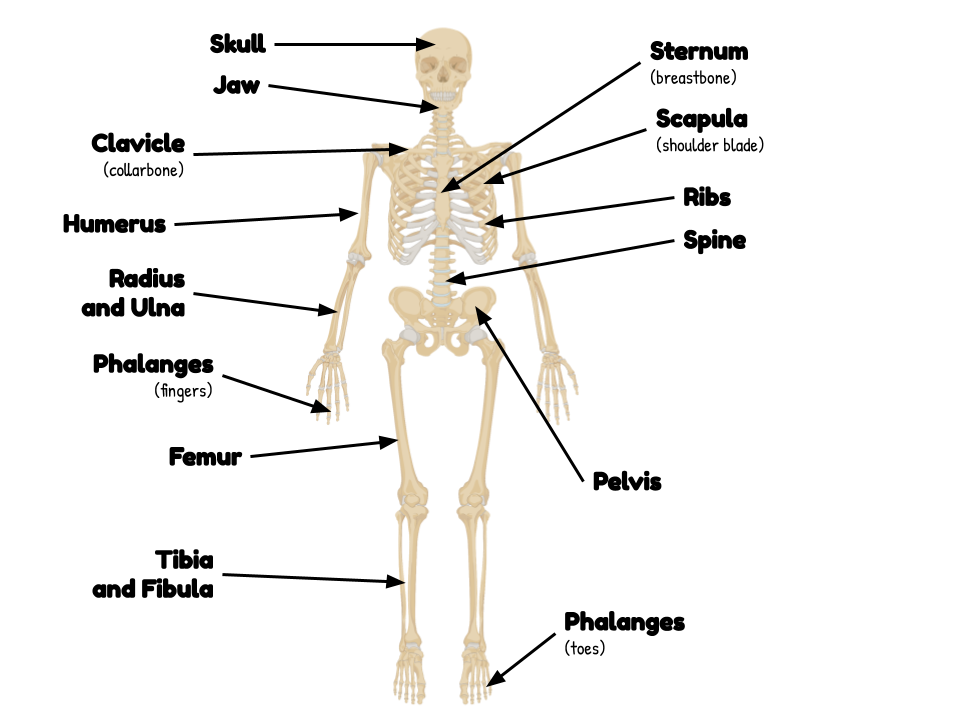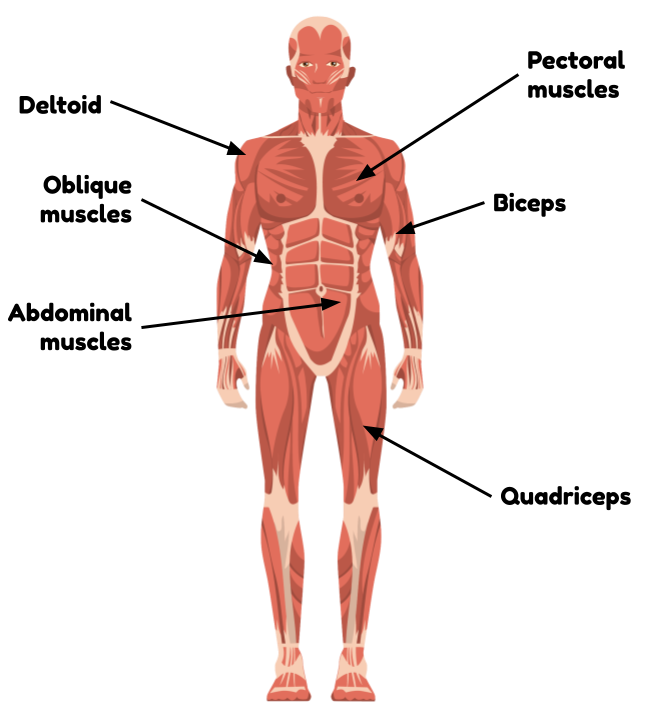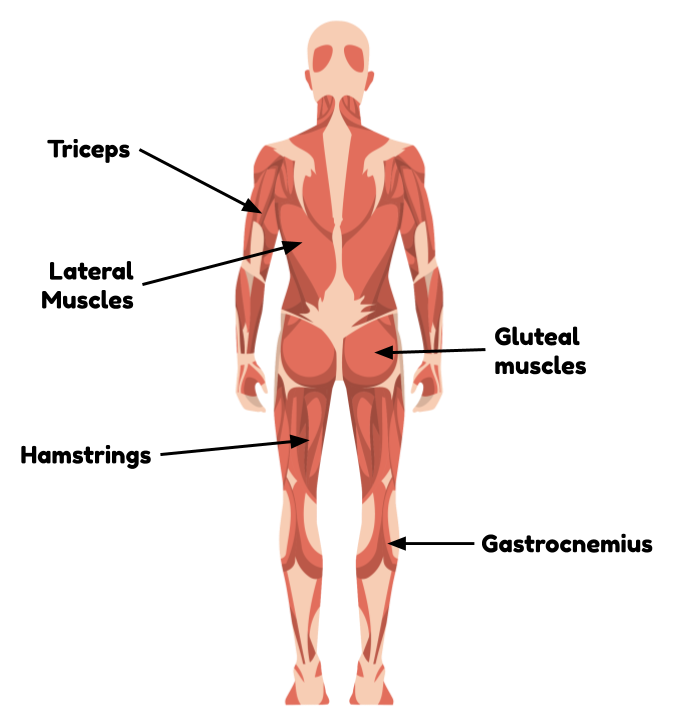anatomy of the musculoskeletal system
We’re not going to be learning the name of every muscle and bone in your body in this class. But, there are some really common ones that you hear people talk about, so you should know what they are called. The most important bones you should know the names of are:
The most important muscles you should know the names of are:
How you choose to memorize these is up to you. For example, here’s a fun bone song:
And here’s a fun muscle song:
Summary
You should know:
- The names and locations of each of the muscles and bones labelled above.
Learning Activity
Print off (or download and fill in on your computer) the following images of the muscular and skeletal system. Color in each bone or muscle that you were asked to learn the name of and label them appropriately. It will be most helpful for you to practice doing this a few times, ultimately just from memory.
| Anatomy Of The Musculoskeletal System |
Contributors: Megha Kori, Emma Moulton
Some images made using biorender.com
Some images made using biorender.com



